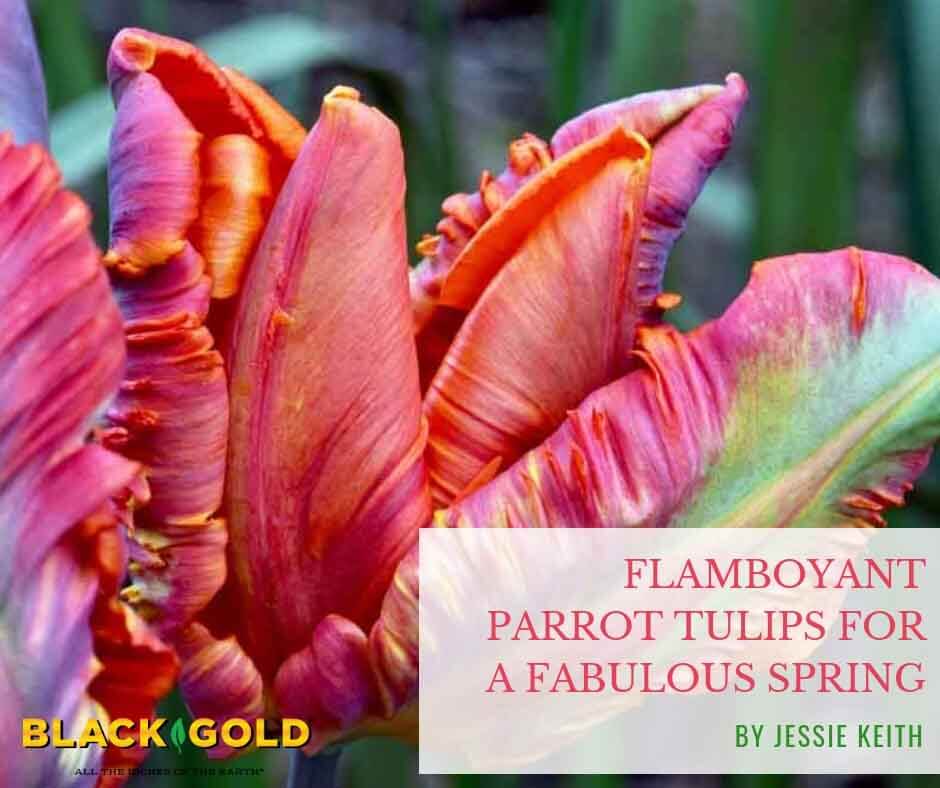
Spring bulbs are for fall planting, and when you plan next spring’s garden palette, plant boldly with Parrot tulips. These bulbs were bred to impress. Each bloom has feathery, undulating petals in brilliant colors that look more tropical than temperate. Many a still life has detailed the artful beauty of these tulips.
Parrot Tulip Origins
Tulips made their way from the Middle East to Europe and quickly became flowers for rich nobles. Most breeding and selection happened in Holland, which is still the case today. When unusual tulips with broken colors began to appear in Dutch gardens in the 1630s, their popularity soared. These rare bulbs fueled Tulip Mania, a phenomenon where bulbs were purchased for sums equivalent of hundreds of thousands today. The mania crashed after a short couple of years–much to the financial woe of collectors. Since then, many modern-day hybrid divisions have been developed, such as Darwin, Triumph, Fringed, and Parrot tulips.
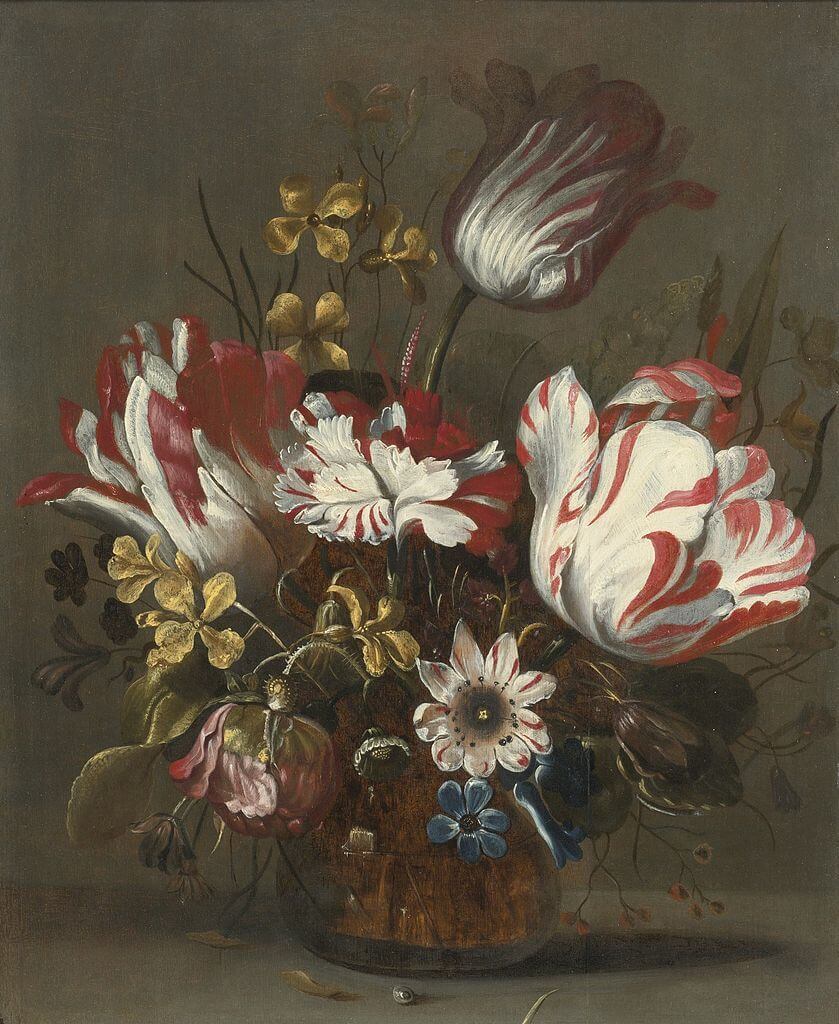
Today’s Parrot tulips have many of the same floral features of the Tulip-Mania types but are a result of selection and breeding rather than disease. They and can be traced to the 18th and 19th centuries, so they’re at home in both modern and heirloom gardens. Early Parrot varieties appeared as genetic sports (mutants) of standard tulips. For example, the award-winning Parrot ‘Rococo’(1942) appeared as a chance sport of the single early tulip ‘Couleur Cardinal’ (1845). In the mid-1970s, they discovered a genetic Parrot tulip, and through breeding, many new varieties appeared.
Parrot Tulips and Companions
Consider height and color when planning your Parrot-tulip-filled spring garden. These factors guide pairings for the most beautiful garden ensembles. All are cold hardy and bloom from mid to late spring. Here are just a few selections cultivars and companions from which to choose.
Apricots
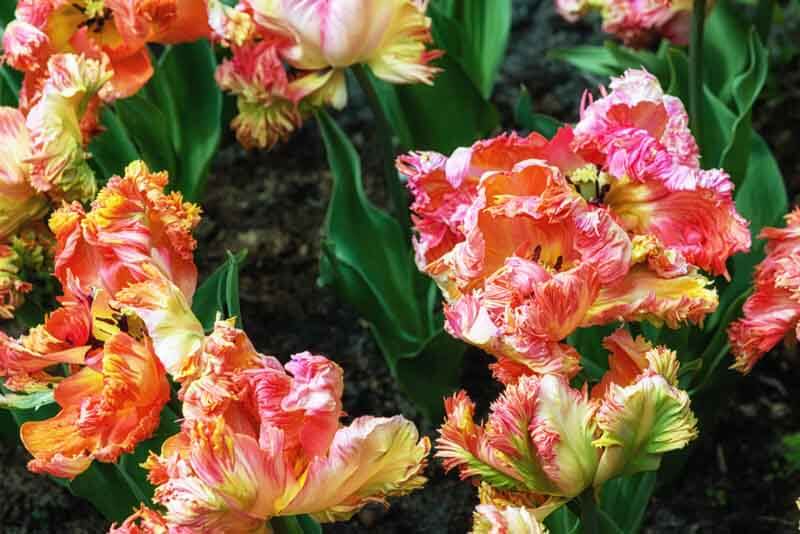
‘Apricot Parrot’ (16-18 inches): A mix of apricots, pinks, and greens exist in each scalloped, flamboyant blossom. The bright-yellow tulip ‘Strong Gold’ will highlight its apricot hues while the pretty pink tulip ‘Salmon Pearl’ will bring out its pinks. The white, orange-red-cupped daffodil ‘Barret Browning’ will blend well with the mix.
‘Amazing’ (18-22 inches): This tulip looks like a birthday party — the deeply feathered flowers of apricot and raspberry-pink are radiant. Its raspberry color is intensified by the deep-rose-pink tulip ‘Don Quichotte’. Flank the pair with the white and apricot-cupped daffodil ‘Chromacolor’.
Black and Purples
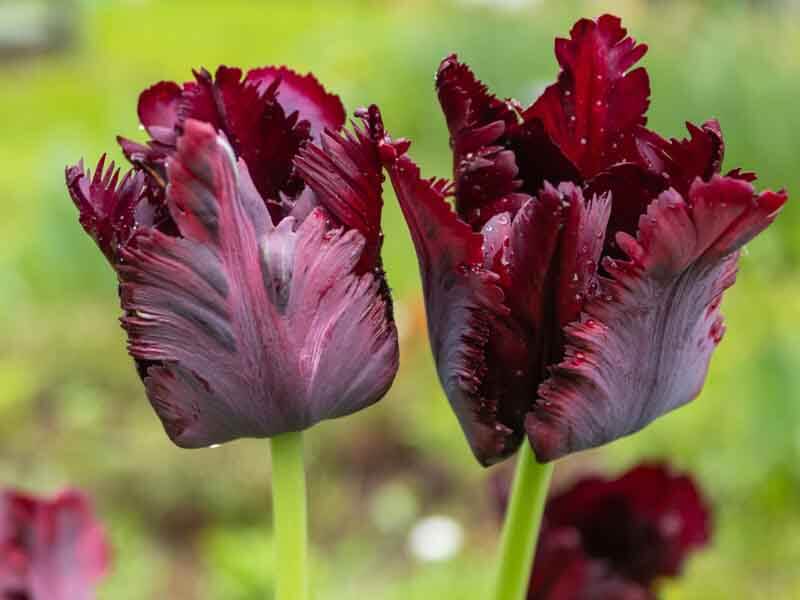
‘Black Parrot’ (20 inches): Bold fringe and deepest burgundy, purple, and near-black color make ‘Black Parrot’ stand out in the garden like night. The plum-red Triumph tulip ‘Bastogne’ will bring out its deep color while the pure-white daffodil ‘Snowboard’ will add a shock of white.
‘Blue Parrot’ (22 inches): Rather than blue, the wild, irregular flowers of ‘Blue Parrot’ are violet-purple with white tips. Pair this with orange and yellow ‘Daydream’ tulips.
‘Rococo’ (14 inches): This remarkable tulip has undulating, feathered flowers of deepest red marked with purple and green. The green, gold, and rose Viridiflora tulip ‘Golden Artist’ is a bold partner.
Pinks
‘Green Wave’ (20 inches): Broad, green feathers mark the pink, deeply incised petals/tepals of this untamed tulip. As the flowers age, they open wide. The white Darwin hybrid ‘White Clouds’ is a safe pairing for such an exotic flower.
‘Pinkvision’ (18-20 inches): The pink, feathery flowers have small markings of green at the base. Plant them alongside the daffodil ‘Las Vegas’, which is ivory with large butter-yellow trumpets.
Reds and Oranges
‘Estella Rijnveld’ (20-22 inches): Bicolored flowers of white with broad feathers of red grace this 1954 variety. Plant the tall, lively tulip among the white Darwin hybrid ‘White Clouds’.
‘Bright Parrot’ (14 inches): Large, glowing red flowers of red with flaming yellow tips are borne on shorter plants. Plant it with the equally compact Narcissus ‘Actaea’, which is highly fragrant, pure white and has tiny orange-red-tipped yellow cups.
Yellows
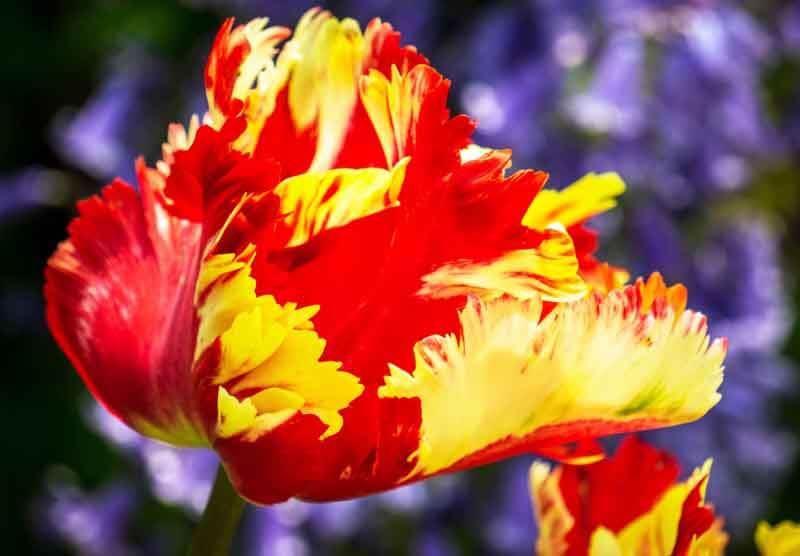
‘Flaming Parrot’ (22 inches): The award-winning tulip glows in the sunshine. It has bicolored yellow blooms with stripes of red down each petal/tepal. Pair it with another award-winner, the long-lasting, golden daffodil ‘Gigantic Star, which has huge, 5-inch flowers.
‘Carribean’ (16 inches): Here’s a beautifully bicolored Parrot of gold with fanned, red-feathered tips. The canary yellow daffodil ‘Unsurpassable’ is a perfect compliment.
Whites
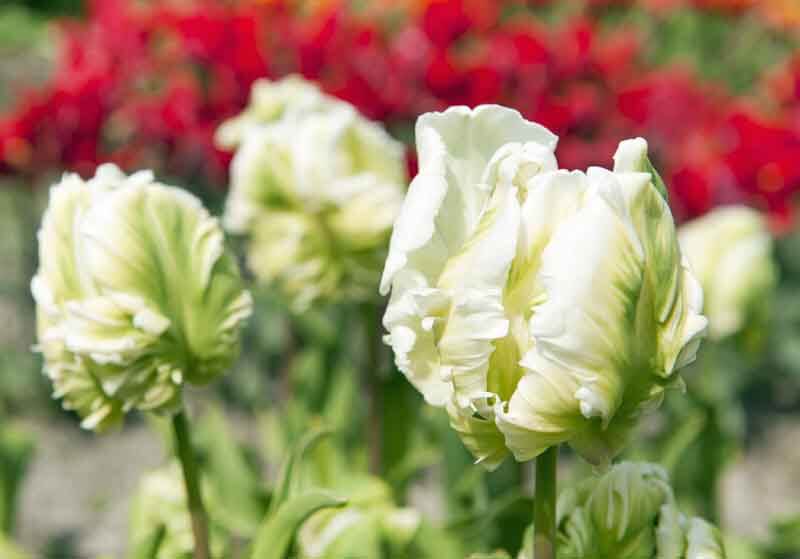
‘White Parrot’ (18 inches): No Parrot tulip is just one color. These white blooms are feathered with green. Plant any spring bulb of the same height and bloom time alongside it.
Planting Tulips
Healthy tulip bulbs should be large, firm, and ivory with a papery covering. Any brown spotting, dry patches, or blue mold on the bulbs indicate poor health. These may underperform or rot. In this case, either return the bulbs or buy new.

Plant large tulips and daffodils 6 inches deep. A bulb planter or planting knife are handy tools for getting the job done quickly. Before planting, work the soil and add fertile amendments as needed. OMRI-listed Black Gold Garden Compost, with its rich blend of compost, bark, and Canadian Sphagnum peat moss, will help your bulbs root quickly and grow well in spring.
At planting time, lay the bulbs out in the pattern you wish. Intermingle the bulb pairings evenly or in sweeps of single colors. Always plant them diagonally rather than in rows. In general, space them 6 inches apart. Fertilize with bone meal or fertilizer formulated for bulbs.
You will not believe the flamboyant party in your garden once mid- to late-spring arrives. You can also cut and bring your Parrots indoors for still-life-worthy flower arrangements.


